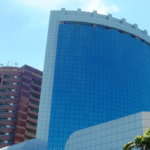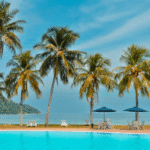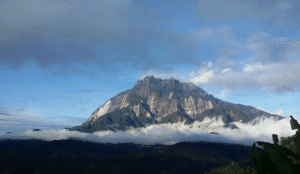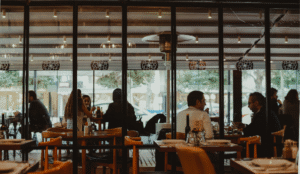Kuala Kangsar Travel Guide: Best Things to Do
Nestled along the gentle curves of the Perak River, Kuala Kangsar is more than just another historical Malaysian town—it is the nation’s royal seat, where timeless tradition meets the charm of small-town life. Plan ahead with this Kuala Kangsar travel guide to uncover the things to do in Kuala Kangsar that blend royal heritage, culture, and nature. Whether you are a history enthusiast, a culture seeker, or simply a traveler looking for peaceful scenery, you will find plenty of things to do in Kuala Kangsar that celebrate its regal heritage and natural beauty. This Kuala Kangsar travel guide will walk you through its stunning palaces, intricate mosques, artisan villages, and lush riversides, ensuring you don’t miss any of the unique Kuala Kangsar attractions that have captivated visitors for centuries.
Frequently Asked Questions (FAQ)
1. How did Kuala Kangsar get its name?
The name Kuala Kangsar is believed to come from the old Malay phrase Kuala Karong-sai, which refers to the meeting point of smaller tributaries with the Perak River. Over time, the pronunciation evolved into the shorter, smoother “Kangsar,” reflecting the town’s role as a riverside settlement and trading hub long before it became Malaysia’s royal seat.
2. Where do the royals live in Malaysia?
Malaysia has nine hereditary monarchs, and each state’s Sultan has an official residence. For the state of Perak, the royal family resides in Istana Iskandariah, an elegant palace in Kuala Kangsar royal town. This active residence hosts state ceremonies and is a key part of the town’s identity as the country’s “royal capital.”
3. What’s in Kuala Kangsar?
Visitors will find an impressive list of Kuala Kangsar attractions: the golden-domed Ubudiah Mosque, the all-wood Istana Kenangan palace, the historic Victoria Bridge, and artisan villages such as Labu Sayong. The town is also known for river cruises, traditional crafts, and famous local dishes like laksa Kuala Kangsar.
4. What is the significance of Kuala Kangsar architecture?
Kuala Kangsar’s architecture is a living record of Malaysia’s history. Grand structures like Ubudiah Mosque showcase Indo-Saracenic design with imported Italian marble, while Istana Kenangan highlights traditional Malay wooden craftsmanship without a single nail. Colonial-era shop houses and the steel-trussed Victoria Bridge add British influences, creating a unique blend that reflects centuries of royal and colonial heritage.
5. What is the population of Kuala Kangsar?
According to the most recent Malaysian census estimates, Kuala Kangsar District has a population of roughly 40,000 to 45,000 residents, with a vibrant mix of Malay, Chinese, and Indian communities. This relatively small size contributes to the town’s relaxed charm and welcoming atmosphere.
A Brief History of the Royal Town
Known as the official residence of the Sultan of Perak, Kuala Kangsar royal town holds a special place in Malaysia’s monarchy. The town’s name is believed to derive from the Malay word Kuala Karong-sai, referring to the confluence of small rivers. Its history dates to the 18th century, when Perak royalty established their court here. Over time, colonial influences blended with traditional Malay architecture, leaving behind buildings and stories that still stand proudly today.
Long before British colonial administrators laid their eyes on Perak, the area that became Kuala Kangsar was a bustling riverside settlement. The Perak River acted as a natural highway for trade and communication, drawing settlers who recognized the fertile land and strategic location. By the 18th century, when the Perak Sultanate decided to move its royal seat here, the town was already known as a meeting point for traders from Sumatra, Siam, and even distant China.
The town gained particular prominence during the reign of Sultan Idris Murshidul’adzam Shah I in the late 19th century. Sultan Idris played a pivotal role in shaping modern Perak, championing education and governance reforms while maintaining deep respect for Malay customs. His decision to host the first Durbar (a conference of Malay rulers) in Kuala Kangsar in 1897 set the stage for the eventual formation of the Federated Malay States.
When the British arrived, they brought administrative offices and architectural influences that can still be seen in old government buildings today. Yet, unlike many colonial towns, Kuala Kangsar never lost its royal heart. Even after independence, it has remained the ceremonial and cultural center for the Perak monarchy, making it a unique blend of Malay sovereignty and colonial heritage.
Getting to Kuala Kangsar
Reaching this picturesque destination is simple. From Kuala Lumpur, travelers can hop on a northbound ETS train and arrive in roughly three hours. Alternatively, buses from major cities like Penang or Ipoh offer a scenic journey through Perak’s countryside. Once you arrive, taxis and e-hailing services make it easy to explore the many Kuala Kangsar attractions scattered across town.
Top Things to Do in Kuala Kangsar: Royal Landmarks & Nature.
When planning the top things to do in Kuala Kangsar, start with these regal highlights that showcase the town’s royal legacy.
Ubudiah Mosque: A Golden Icon
The Ubudiah Mosque is often described as one of Malaysia’s most beautiful mosques—and for good reason. Its golden domes gleam beneath the tropical sun, creating a striking contrast against a bright blue sky. Built in 1917, the mosque’s Indo-Saracenic design invites visitors to admire intricate marble details and tranquil gardens. Whether you come to pray or simply to photograph the view, the mosque tops most lists of things to do in Kuala Kangsar. A visit here deserves a top spot on any list of things to do in Kuala Kangsar, especially for architecture lovers.
Visiting Ubudiah Mosque is among the most impressive things to do in Kuala Kangsar for architecture lovers. The Ubudiah Mosque isn’t just visually stunning; it is steeped in fascinating anecdotes. Construction began in 1913 but was interrupted several times—most famously when two royal elephants fought on the site, damaging imported Italian marble tiles. Despite these setbacks, the mosque was completed in 1917 and has stood as a symbol of perseverance and faith ever since. Visit at dawn or dusk for an otherworldly glow as the golden domes reflect soft light across the surrounding palm trees.
Istana Kenangan: The Wooden Palace
Just a short stroll from the mosque stands Istana Kenangan, a former royal residence built entirely of wood without the use of nails. This wooden masterpiece is one of the most unforgettable things to do in Kuala Kangsar for history buffs. The palace’s woven bamboo walls form geometric patterns that display impeccable Malay craftsmanship. Today, it houses the Perak Royal Museum, where you can immerse yourself in royal artifacts and fascinating stories of the Sultanate—an essential stop on any Kuala Kangsar travel guide.
Known locally as the “Memory Palace,” Istana Kenangan was originally built to house the Sultan while Istana Iskandariah was under renovation. What makes it extraordinary is not just the absence of nails but also the thoughtful ventilation design: slatted bamboo walls allow natural airflow, keeping interiors cool in the tropical heat. Inside, the Perak Royal Museum displays royal regalia, vintage photographs, and personal effects that give visitors an intimate glimpse of Perak’s royal lineage.
Istana Iskandariah: Current Royal Residence
Perched on a hill overlooking the Perak River, Istana Iskandariah is the official residence of the Sultan. Although the palace itself is not open to the public, its majestic presence and surrounding landscape make it worth visiting. The view from the nearby riverbank, especially at sunset, captures the dignified aura of Kuala Kangsar royal town.
Although public entry is restricted, the palace grounds themselves are a delight. From the riverbank, you can see the impressive blend of Moorish and classical Malay architecture. If you’re lucky to visit during a royal celebration or state event, you may witness ceremonial processions featuring guards in traditional attire—a reminder that this is still an active royal residence, not merely a relic.
Architectural Marvels Beyond the Palaces
Crossing this century-old bridge is among the most photogenic things to do in Kuala Kangsar, particularly at sunrise. Built in 1900, this single-track railway bridge is an engineering gem and a favorite spot for photographers. Wooden planks and steel trusses create a nostalgic atmosphere, especially when mist rises from the river in the early morning. Walking across the bridge offers sweeping views of the Perak River—an underrated highlight among Kuala Kangsar attractions.
This century-old single-lane bridge once served as a vital link for tin mining transport. Today, it is closed to trains but open to pedestrians and cyclists. Walk across early in the morning when mist rises off the river and the only sounds are bird calls and the echo of your footsteps on the wooden planks. Photographers often time their visit for sunset when the steel trusses are silhouetted against a crimson sky.
The top things to do in Kuala Kangsar is to visit the town center, the clock tower marks the heart of local activity. Surrounded by colonial-era shop houses painted in soft pastels, it provides a perfect starting point for a leisurely walking tour.
This century-old single-lane bridge once served as a vital link for tin mining transport. Today, it is closed to trains but open to pedestrians and cyclists. Walk across early in the morning when mist rises off the river and the only sounds are bird calls and the echo of your footsteps on the wooden planks. Photographers often time their visit for sunset when the steel trusses are silhouetted against a crimson sky.
Dating back to the early 1900s, the clock tower is more than a timepiece—it’s the beating heart of the local marketplace. Around it, rows of pastel-painted shophouses reveal a mix of Straits Chinese and colonial design. Many of these buildings now host chic cafés and boutique stores, creating a lively contrast of old and new.
Cultural Encounters and Living Heritage
For travelers seeking hands-on cultural experiences, the following activities rank high among the essential things to do in Kuala Kangsar.
No visit is complete without exploring the famous Labu Sayong Village, where artisans handcraft the iconic gourd-shaped water jars believed to keep drinks cool naturally. Visitors can watch potters at work, try their hand at molding clay, and purchase beautiful souvenirs. This experience embodies the cultural richness that makes things to do in Kuala Kangsar so memorable.
Another craft worth discovering is tekatan embroidery and gold thread weaving, a skill passed down for generations. Workshops occasionally welcome tourists, allowing a closer look at this delicate art form.
Kuala Kangsar’s cultural richness is best experienced hands-on. In Labu Sayong Village, artisans pass down techniques learned from their ancestors. Visitors can join a short class, shaping and decorating their own clay pots. The distinctive gourd-shaped labu is more than a decorative item; locals believe the porous clay naturally cools water, making it the eco-friendly “refrigerator” of the past.
Another captivating tradition is tekatan gold-thread embroidery. During royal ceremonies, you may notice shimmering fabrics draped across thrones or worn by the royal family. Artisans’ welcome visitors to observe the painstaking process of stitching metallic thread into elaborate motifs—a craft requiring steady hands and incredible patience.
Food culture is also integral to local heritage. Markets brim with vendors selling laksa Kuala Kangsar, fragrant rendang tok, and colorful kuih muih. Strike up conversations with stall owners; many are eager to share family recipes and culinary tips passed down through generations.
Nature and Riverside Serenity
For a peaceful afternoon, embark on a boat cruise along the Perak River. You’ll glide past mangroves, quaint fishing villages, and historical sites that tell stories of the town’s past. Birdwatchers often spot herons and kingfishers, adding a touch of wildlife to the tranquil scenery. Photography enthusiasts will find that sunrise shots are among the most rewarding things to do in Kuala Kangsar.
If you prefer to stay on land, the Bukit Chandan trail offers gentle hikes beneath towering trees. Along the way, you’ll find panoramic views of the town’s mosques and palaces. Pack a light picnic to enjoy at one of the shaded resting points.
The Perak River Cruise remains a highlight for travelers seeking tranquility. Boats glide past mangroves and fishing hamlets where children wave enthusiastically from wooden jetties. Guides often share stories of the river’s role in tin mining and how it once served as the main transportation artery for royal emissaries.
For land-based exploration, the Bukit Chandan Walk offers a serene canopy of ancient trees. Early risers might catch sight of dusky leaf monkeys leaping from branch to branch. Benches along the trail invite you to pause and absorb the chorus of cicadas and birds.
Just outside town, small eco-parks feature picnic spots and natural swimming holes. These lesser-known areas are perfect if you want a quiet afternoon away from the main tourist circuit.
Food Adventures in the Royal Town
Tasting local dishes is not just a meal—it’s one of the tastiest things to do in Kuala Kangsar during any visit. Sampling laksa is one of the tastiest things to do in Kuala Kangsar.
Food lovers rejoice—this local variant of laksa is a must-try. A spicy fish-based broth combined with thick noodles creates a hearty meal beloved by residents. Stalls near the clock tower serve bowls brimming with fresh herbs and a side of lime for extra zest.
Malay Kuih and Street Snacks
Stroll through the morning market to taste colorful kuih such as seri muka and onde-onde. These bite-sized sweets highlight Perak’s culinary diversity and make for excellent road snacks as you explore more Kuala Kangsar attractions.
Beyond the famous laksa, food lovers should hunt for rendang tok, a rich Perak specialty made by simmering beef in coconut milk and spices for hours until tender and flavorful. For dessert, sample puding raja, a banana-based pudding once served exclusively to royalty. Pair these treats with a cup of thick local coffee at a riverside café and watch the world drift by.
Evening brings a lively night market where charcoal grills sizzle with satay skewers and vendors call out daily specials. Try the roti canai with a side of dhal or spicy sambal for a satisfying late-night snack.
Suggested Itinerary for a Day Trip
This sample day trip covers the best things to do in Kuala Kangsar from morning to night.
- Morning: Arrive early to visit Ubudiah Mosque and Istana Kenangan before the crowds.
- Late Morning: Walk the Victoria Bridge and capture photos of the Perak River.
- Lunch: Sample authentic Laksa Kuala Kangsar in the town center.
- Afternoon: Join a pottery workshop in Labu Sayong Village.
- Evening: End with a river cruise as the sun sets over Kuala Kangsar royal town.
Early Morning: Begin with sunrise photography at Victoria Bridge, followed by a leisurely breakfast of local nasi lemak at a riverside stall.
Mid-Morning: Tour the Ubudiah Mosque and Istana Kenangan, leaving ample time to explore the museum’s exhibits.
Lunch: Feast on laksa and rendang tok in the old town area.
Afternoon: Join a hands-on pottery workshop in Labu Sayong Village and pick up a handmade souvenir.
Late Afternoon: Walk Bukit Chandan for sweeping views and perhaps spot local wildlife.
Evening: Finish with a Perak River sunset cruise and, if energy allows, browse the vibrant night market for street snacks.
This pacing ensures you enjoy key Kuala Kangsar attractions without feeling rushed.
Practical Tips for Travelers
To enjoy all the memorable things to do in Kuala Kangsar, dress comfortably and plan for a full day of walking.
- Dress Modestly when visiting religious sites like Ubudiah Mosque.
- Transportation: While walking covers most central spots, consider renting a bicycle for outer attractions.
- Best Time to Visit: The dry season from May to August offers clear skies perfect for photography.
Beyond Kuala Kangsar: Nearby Excursions
Taiping:
Only a 40-minute drive away, Taiping’s Lake gardens and heritage streets make an easy day-trip extension.
Ipoh:
Perak’s capital is about an hour south and is famous for limestone caves and vibrant street art—an ideal pairing for your Kuala Kangsar travel guide adventure.
For travelers with extra time, Taiping is a natural extension of your trip. Known for its lush Lake Gardens and the country’s first hill station at Bukit Larut, Taiping offers a cooler climate and colonial charm. History buffs can explore the Taiping War Cemetery or the Perak Museum, the oldest in Malaysia.
Ipoh, the Perak capital, lies just an hour away and is famous for its limestone cave temples like Kek Lok Tong and Sam Poh Tong. Food lovers will relish Ipoh’s white coffee and chicken rice, making it a culinary pilgrimage.
If you crave more nature, head west to Pulau Pangkor, a laid-back island ideal for beaches and fresh seafood. Each of these side trips complements a Kuala Kangsar travel guide, offering diverse experiences while keeping travel times short.
Why Kuala Kangsar Captivates Travelers
What makes this destination so unique is its perfect balance of history, culture, and natural charm. Visitors can step inside century-old palaces in the morning, create pottery in the afternoon, and enjoy a riverside sunset by evening. Unlike bustling metropolitan cities, the town moves at a relaxed pace, allowing travelers to truly connect with local traditions and people.
Conclusion: Plan Your Royal Journey
Kuala Kangsar is not just the heart of Perak’s monarchy—it is a living museum of Malaysia’s heritage. From mosques to night markets, the variety of things to do in Kuala Kangsar ensures every traveler finds something unique. From golden mosques and wooden palaces to pottery villages and scenic river views, the array of things to do in Kuala Kangsar ensures every traveler leaves with cherished memories. Whether you’re crafting your own Kuala Kangsar travel guide or simply seeking authentic experiences, this regal destination deserves a spot on your Malaysian itinerary. Pack your camera, bring your curiosity, and step into the timeless elegance of Kuala Kangsar royal town. From palaces to pottery, the variety of things to do in Kuala Kangsar ensures a memorable trip.





